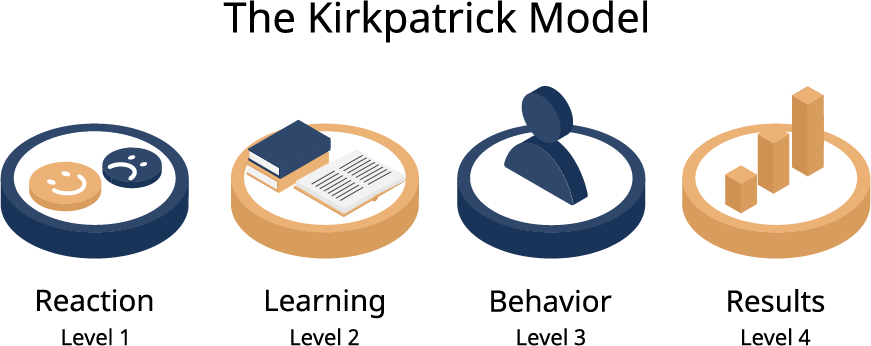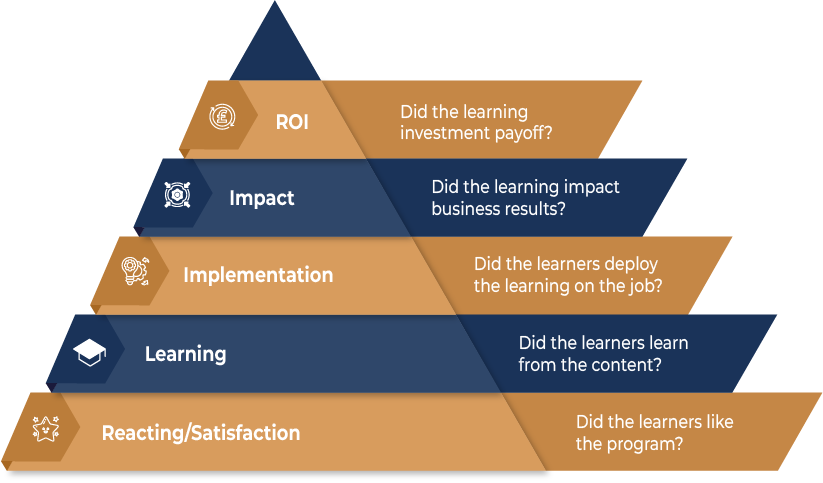‘Ever invested time and effort into CPD activities, then found yourself wondering, ‘Did it pay off?‘
To extract the potential of your training activities, you need a way to measure their impact. This helps you identify the most effective training activities that covers the most distance between you and your goals. The ROI (Return On Investment) of CPD activities reflects the value, an organisation gains from its investment in employee learning and development. It measures the tangible benefits and business outcomes resulting from the time, money, and resources spent on CPD initiatives.
What is Return on Investment (ROI)?
Return on investment (ROI) is a performance measure to assess the profitability of an investment. ROI of training encompasses the benefits a company gains as a result of training relative to the monetary investment made. It guides future training decisions by demonstrating training impact.
Why do Organisations Need to Measure Roi?
Organisations measure ROI as it provides them with a quantifiable means to understand the benefits of a training initiative. Here are some of the reasons why it is important to calculate ROI:
- Training budgets can be hard to allocate, but showing the effectiveness of proposed training helps secure funding.
- Training ROI allows you to compare different programs, helping you understand which programme had a greater impact.
- ROI provides an objective measure to demonstrate that training resources are being well spent and aligned with business goals.
- Beyond satisfaction, ROI helps evaluate whether training delivers actual benefits like improved efficiency, skill acquisition, or positive behavioural changes.

How to Measure ROI?
Now that we have explored the importance of measuring ROI and the benefits it brings, we will now examine the various methods available for assessing the ROI of our CPD activities.
There are five methods to measure ROI:
- The KirkPatrick Model
- The Philips ROI Methodology
- The Impact Studies
- Benefit to Cost Ratio
- Training Performance Analysis (Pre and Post)
The Kirkpatrick Model
Developed in 1954, this method is very popular for evaluating training effectiveness. This method employs four levels of criteria to assess the ROI of a CPD activity.

Level 1: REACTION
Were learners satisfied with the training?
You can gauge the reaction of the trainees by either using surveys or asking questions such as:
- What they thought were the benefits and limitations of the training session?
- Did the training strategy and method used align with their individual learning preference?
- What were the main takeaways from the experience?
Level 2: LEARNING
Did the employees learn something new?
The learning criterion helps you evaluate how effectively your learners have grasped the training content and if they have acquired new knowledge or skills. This is typically measured through interviews.
Level 3: BEHAVIOUR
Were they able to apply their new knowledge to a specific situation?
The behaviour criterion focuses on changes in your learners’ behaviour and how these changes are applied in their work practices. This can be evaluated through on-site observations or conversations with your learners’ managers. The behaviour criterion is often the primary focus.
Level 4: RESULT
What was the impact of the training on the company?
The results criterion evaluates the effect of training on business outcomes. For example, if the training is focused on management, you would want to determine whether your employees’ job performance as managers has improved as a result of the training.
The results criterion is central to most training programs, as it directly relates to business performance. This can be measured through employee surveys or data from performance appraisals.
Reversing the Kirkpatrick Model: Starting with Outcomes for Greater Training Impact
The Kirkpatrick model typically follows a linear sequence
Reaction → Learning → Behavior → Results
A more effective approach can involve working backwards. That is start with the desired outcomes and trace back through the model.
For example, if the goal is to improve engagement, follow these steps:
- First, assess the training results (e.g., Has engagement improved?).
- Next, analyse behaviour changes that have contributed to higher engagement.
- Then, review the learning objectives and how they helped your team.
- Finally, evaluate learner reactions to identify areas for improvement in future training.
Now, let us explore another method for calculating ROI. This approach provides objective results and is built upon the foundational principles of the Kirkpatrick model.
The Philips ROI Methodology
Philip’s method developed in the 2000’s extends on the Kirkpatrick model by adding a fifth level to measure the impact of training. Philip calculates the ROI following the below mentioned formula:
ROI %= (Net Programme Benefits / Programme Costs) × 100

This method converts training results into financial values, offering a clear and measurable ROI. Such data is preferred by stakeholders, as it provides tangible proof of how beneficial the training initiative was. However, obtaining the necessary data for this calculation can be complicated. It often relies on assumptions and estimates, which may introduce biases or inaccuracies.
Furthermore, this approach isn’t always applicable. For instance, training for soft skills or behavioural changes are particularly challenging to quantify in terms of monetary value.
Now, let’s consider an alternative approach to calculating the ROI of your training Programmes.
Impact Studies

Another way to calculate training ROI is through a business impact study, which evaluates the changes resulting from the training programme. These changes could be related to customer retention, employee productivity, or other key performance indicators.
Impact studies typically follow a four-step process:
- Evaluation Planning: Define the metrics you will use to measure the impact of the training, such as improvements in employee productivity levels.
- Data Collection: Gather data for your selected metric before and after the training, for example, measuring employee output before and after the programme.
- Data Analysis: Analyse the data, making adjustments if necessary, and calculate the ROI using an appropriate formula, such as the Phillips ROI model.
- Reporting: Present both qualitative and quantitative results, including any insights or observations collected during the evaluation process.
Benefit To Cost Ratio

The Benefit-Cost Ratio (BCR) is a financial metric used to assess the ROI of CPD activities by comparing the benefits to the costs incurred. It is calculated by dividing the total monetary benefits (such as increased productivity or cost savings) by the total costs of the CPD program.
For example: If an employer spends ₤50,000 on a leadership training program and gains $170,000 in tangible benefits (e.g., increased revenue, reduced turnover), the BCR would be 3.4, indicating a positive ROI.
However, BCR’s accuracy can be limited when it comes to intangible benefits of CPD, such as improved employee morale or long-term behavioural changes, which are harder to quantify. To improve accuracy, combine BCR with qualitative assessments to account for these less measurable benefits.
Benefit to cost ratio (%) = Benefit to cost ratio (%) = Training benefit (net)
Training Performance Analysis (Pre and Post)

This method is particularly effective in situations where performance improvements can be quantitatively measured.
For example: Consider an employer, whose employees are undergoing training to improve their communication skills. Relevant metrics to evaluate pre and post training performance could include increase in efficiency and customer satisfaction. To assess the impact, you would first collect data on these metrics over a set period, such as a month, before the training. After the training, you would track the same metrics for another month and compare the results to gauge improvements.
This method is straightforward and allows you to focus on key metrics aligned with your training objectives, but it requires careful consideration of when to measure. If the post-training data is collected too soon, the full effects of the training may not be apparent, while measuring too late could introduce external factors that complicate the evaluation.
While calculating ROI itself is relatively straightforward, it is crucial to identify the right metrics to measure in order to obtain accurate results. Assessing the wrong metrics can lead to unreliable outcomes and undermine the value of your analysis.
Which Metrics To Assess When Calculating Training Roi?
It is important to select the metric which accurately measures your goal, in order to quantify the effectiveness and impact of the training. Below mentioned are the metrics used to measure training ROI:
- Productivity Metrics: Measure changes in productivity, efficiency, and output after training.
- Employee Satisfaction Surveys: Assess employee satisfaction and engagement before and after training to see its effect on morale.
- Retention Rates: Track turnover and employee tenure to evaluate if training helps retain staff.
- Innovation Metrics: Count new ideas, projects, or improvements from employees after training.
- Skills Acquisition: Track new skills learned by employees and how they use them in their work.
- Customer Satisfaction: Review customer feedback to see if a trained workforce improves customer experiences.

Conclusion
In conclusion, measuring the ROI of your training investments is essential for understanding their true value and impact on your organization. By utilizing methods such as the Kirkpatrick model, Philips ROI methodology, and other evaluation techniques, you can make informed decisions about the effectiveness of your employee development Programmes. Remember, the key to accurate ROI measurement lies in selecting the right metrics that align with your training objectives. With the right approach, you can ensure that your training efforts are not only beneficial but also drive meaningful business outcomes.

























